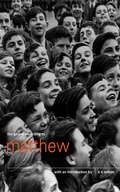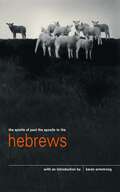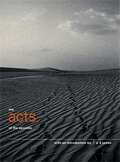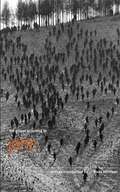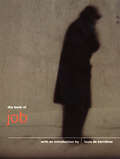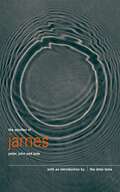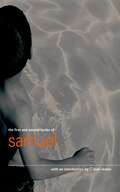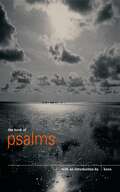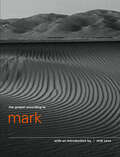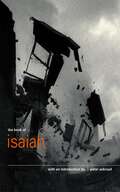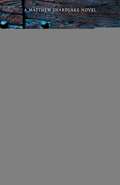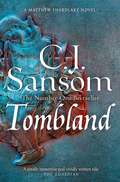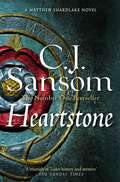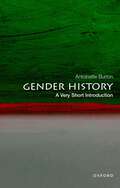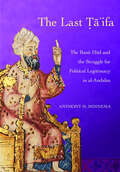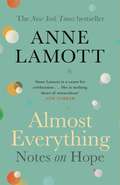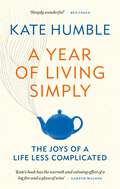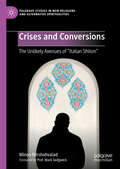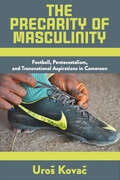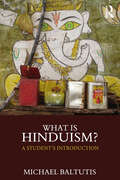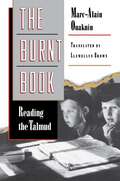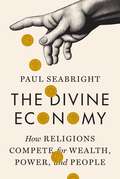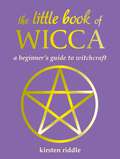- Table View
- List View
The Gospel According to Matthew (The Pocket Canons #7)
by A.N. WilsonRecounting the birth, baptism, crucifixion and resurrection of Christ, Matthew is regarded as the most ideological portayal of Jesus's life. Some view it as a deliberate parallel to the written teachings of Judaism while the Catholic Church sees the book as a marker for its own authority. With an introduction by A.N. Wilson
The Epistle of Paul the Apostle to The Hebrews (The Pocket Canons #21)
by Karen ArmstrongHebrews marks a parting of the ways for Jews and Christians of the first century. It makes a case for the superiority of the new Christian 'faith' over old Hebrew orthodoxy and draws on the Old Testament for precedents for Jesus's ministry and to paint a picture of Jesus.
The Acts of the Apostles (The Pocket Canons #19)
by P.D. JamesActs is the sequel to Luke's gospel and tells the story of Jesus's followers during the 30 years after his death. It describes how the 12 apostles, formerly Jesus's disciples, spread the message of Christianity throughout the Mediterranean against a background of persecution. With an introduction by P.D. James
The Gospel According to John (The Pocket Canons #10)
by Blake MorrisonIn both the literary sense and content, this gospel differs dramatically from the others in that it expresses the movement towards agnosticism and is more concerned with explaining high concepts like truth, light, life and spirit than recounting historical fact. With an introduction by Blake Morrison
The Book of Job (The Pocket Canons #3)
by Louis de BernièresSuffering in an unjust world is the theme of this book. God punishes Job, a wealthy and pious man, after giving an assertion to Satan that his subject will never curse him. It goes on to explain why Job has suffered, raising ethical questions about the nature of divinity. The text is introduced by author Louis de Bernieres
The Epistles of James, Peter, John and Jude (The Pocket Canons #22)
by Dalai LamaAlongside the epistles of Paul in the New Testament are short letters of four unknown early Christian writers, James, Peter, John and Jude. Those of Peter were composed in excellent Greek, James emphasizes the need for good works and Peter berates false prophets. With an introduction by the Dalai Lama.
The First and Second Books of Samuel (The Pocket Canons #14)
by Meir ShalevThis volume presents the Old Testament book of Samuel, with an introduction by Meir Shalev. In two parts, the book tells the story of one of the most charismatic of Old Testament characters, King David and his meteoric rise and inevitable fall.
The Book of Psalms (The Pocket Canons #15)
by BonoThrough the ages, the book of Psalms has been regarded as the most inspirational of all the Bible's books. It is not known how or when the collection of 150 lyrical poems came into existence, though many are ascribed to King David. The text is introduced by U2 singer Bono.
The Gospel According to Mark (The Pocket Canons #8)
by Nick CaveThe earliest of the four Gospels, the book portrays Jesus as an enigmatic figure, struggling with enemies, his inner and external demons, and with his devoted but disconcerted disciples. Unlike other gospels, his parables are obscure, to be explained secretly to his followers. With an introduction by Nick Cave
The Book of the Prophet Isaiah (The Pocket Canons #16)
by Peter AckroydThis is the text of the book of Isaiah, the first and foremost of the 17 'prophetic' books of the Old Testament. Contrasting with images of wrath and destruction are visions of an age of peace and harmony. The biblical text is introduced by Peter Ackroyd.
Lamentation: A Shardlake Novel (The Shardlake series #6)
by C. J. Sansom'C. J. Sansom’s books are arguably the best Tudor novels going' – The Sunday TimesLamentation is the sixth breathtaking historical novel in C. J. Sansom’s number one bestselling Shardlake series, perfect for fans of Hilary Mantel and Philippa Gregory.England, 1546. King Henry VIII is dying. Meanwhile, his Protestant and Catholic councillors are engaged in a final and decisive power struggle to control the government of Henry’s successor, eight–year–old Prince Edward. As heretics are hunted across London, the Catholic party focus their attack on Henry’s sixth wife, Matthew Shardlake’s old mentor, Queen Catherine Parr, and Shardlake is unexpectedly summoned to Whitehall Palace.For the Queen has a secret. She has written a confessional book, Lamentation of a Sinner, so radically Protestant that if it came to the King’s attention it could bring both her and her sympathizers crashing down.When the book inexplicably vanishes, and a single page is found clutched in the hand of a murdered printer, Shardlake must help the desperate Queen. His loyalty will drive him into a swirl of intrigue inside the palace, where Catholic enemies and Protestant friends can be equally dangerous, and the political opportunists, who will follow the wind wherever it blows, more dangerous than either . . .Lamentation is the sixth novel in C. J. Sansom's gripping historical series. Continue the series with book seven, Tombland.
Tombland (The Shardlake series #7)
by C. J. Sansom'C. J. Sansom’s books are arguably the best Tudor novels going' – The Sunday TimesTombland is the seventh epic novel in C. J. Sansom's number one bestselling Shardlake series, perfect for fans of Hilary Mantel and Philippa Gregory.England, 1549. Two years after the death of Henry VIII, England is sliding into chaos. The economy is in collapse, inflation rages and rebellion is stirring among the peasantry . . .Since the old king’s death, Matthew Shardlake has been working as a lawyer in the service of Henry’s daughter, the Lady Elizabeth. The gruesome murder of Edith Boleyn – a distant relative in Norfolk – sends Shardlake and his assistant Nicholas Overton to the summer Assizes at Norwich. And then East Anglia explodes, as peasant rebellion breaks out across the country. The yeoman Robert Kett leads a force of thousands in overthrowing the landlords and taking over Norwich, England’s second largest city.Now Shardlake must decide where his ultimate loyalties lie, as government forces in London prepare to march north and destroy the rebels. Meanwhile he discovers that the murder of Edith Boleyn may have connections reaching into both the heart of the Norfolk gentry and the rebel camp itself . . .This is the seventh novel in C. J. Sansom's thrilling historical series that started with Dissolution. Includes an Historical Essay from the author on Reimagining Kett's Rebellion.
Heartstone: Murder Mystery and Tudor History in This Atmospheric Historical Fiction Novel (The Shardlake series #5)
by C. J. Sansom'C. J. Sansom’s books are arguably the best Tudor novels going' – The Sunday TimesHeartstone is the fifth spellbinding mystery in C. J. Sansom’s number one bestselling Shardlake series, perfect for fans of Hilary Mantel and Philippa Gregory.England, 1545. England is at war. Henry VIII’s invasion of France has gone badly wrong, and a massive French fleet is preparing to sail across the Channel.Meanwhile, Matthew Shardlake is given an intriguing legal case by an old servant of Queen Catherine Parr. Asked to investigate claims of ‘monstrous wrongs’ committed against a young ward of the court, Shardlake and his assistant Jack Barak journey to Portsmouth. There, Shardlake also intends to investigate the mysterious past of Ellen Fettiplace, a young woman incarcerated in the Bedlam.Once in Portsmouth, Shardlake and Barak find themselves in a city preparing for war. The mysteries surrounding the two cases involve Shardlake in reunions both with an old friend and an old enemy close to the throne. And soon, events will converge on board one of the King’s great warships gathered in Portsmouth harbour, waiting to confront the approaching French fleet . . .Heartstone is the fifth novel in C. J. Sansom's gripping historical series. It is followed by the sixth book in the series, Lamentation.
Gender History: A Very Short Introduction (VERY SHORT INTRODUCTIONS)
by Antoinette BurtonAntoinette Burton argues that gender history is hiding in plain sight, at work everywhere we look. This volume introduces the field of gender history--its origins, development, reception, recalibrations, and frictions. It offers a set of working definitions of gender as a descriptive category and as a category of historical analysis, tracing the emergence, usage, and applicability of these entwined subjects across a range of times and places since the 1970s. Inevitably political, gender history has taken aim at the broader field of historical narrative by asking who counts as a historical subject, what difference gender makes, and how attention to it subverts reigning assumptions of what power, culture, economics, and identity have been in the past--and what they are today. The book explores how gender analysis has changed interpretations of the histories of slavery, capitalism, migration, and empire. As a field, gender history has been extraordinarily influential in shaping several generations of scholars and students. The fact that its early emphasis on the relationship between masculinity and femininity was part of a larger set of challenges to universal history by poststructuralism, postmodernism, and postcolonialism positions it at the heart of some of the most fractious intellectual debates of the late twentieth and early twenty-first centuries. And, as part of the movement toward gender equality that is key to modern western progress, gender history has been caught up in the culture wars that continue to shape post-global society. What is intriguing and ultimately defining about gender history is the way that the centrality of gender, so important for revealing how identity is structured in and through regimes of power, has been unable to hold its own over the half century of the field's own history. The practice of gender history has always run up against the forces of race, class, and sexuality that challenge the singularity of gender itself as an explanatory category of historical analysis. That powerful, unruly tension is at the heart of this Very Short Introduction.
Gender History: A Very Short Introduction (VERY SHORT INTRODUCTIONS)
by Antoinette BurtonAntoinette Burton argues that gender history is hiding in plain sight, at work everywhere we look. This volume introduces the field of gender history--its origins, development, reception, recalibrations, and frictions. It offers a set of working definitions of gender as a descriptive category and as a category of historical analysis, tracing the emergence, usage, and applicability of these entwined subjects across a range of times and places since the 1970s. Inevitably political, gender history has taken aim at the broader field of historical narrative by asking who counts as a historical subject, what difference gender makes, and how attention to it subverts reigning assumptions of what power, culture, economics, and identity have been in the past--and what they are today. The book explores how gender analysis has changed interpretations of the histories of slavery, capitalism, migration, and empire. As a field, gender history has been extraordinarily influential in shaping several generations of scholars and students. The fact that its early emphasis on the relationship between masculinity and femininity was part of a larger set of challenges to universal history by poststructuralism, postmodernism, and postcolonialism positions it at the heart of some of the most fractious intellectual debates of the late twentieth and early twenty-first centuries. And, as part of the movement toward gender equality that is key to modern western progress, gender history has been caught up in the culture wars that continue to shape post-global society. What is intriguing and ultimately defining about gender history is the way that the centrality of gender, so important for revealing how identity is structured in and through regimes of power, has been unable to hold its own over the half century of the field's own history. The practice of gender history has always run up against the forces of race, class, and sexuality that challenge the singularity of gender itself as an explanatory category of historical analysis. That powerful, unruly tension is at the heart of this Very Short Introduction.
The Last Ta'ifa: The Banu Hud and the Struggle for Political Legitimacy in al-Andalus (Medieval Societies, Religions, and Cultures)
by Anthony H. MinnemaIn The Last Ta'ifa, Anthony H. Minnema shows how the Banu Hud, an Arab dynasty from Zaragoza, created and recreated their vision of an autonomous city-state (ta'ifa) in ways that reveal changes to legitimating strategies in al-Andalus and across the Mediterranean. In 1110, the Banu Hud lost control of their emirate in the north of Iberia and entered exile, ending their century-long rule. But far from accepting their fate, the dynasty adapted by serving Christian kings, nurturing rebellions, and carving out a new state in Murcia to recover, maintain, and grow their power. By tracing the Banu Hud across chronicles, charters, and coinage, Minnema shows how dynastic leaders borrowed their rivals' claims and symbols and engaged in similar types of military campaigns and complex alliances in an effort to cultivate authority. Drawing on Arabic, Latin, and vernacular sources, The Last Ta'ifa uses the history of the Banu Hud to connect the pursuit of legitimacy in al-Andalus to the politics of other emerging kingdoms and emirates. The actions of Hudid leaders, Minnema shows, echoed across the region as other kings, rebels, and adventurers employed parallel methods to gain power and resist the forces of centralization, highlighting the constructed nature of legitimacy in al-Andalus and the Mediterranean.
Almost Everything: Notes on Hope
by Anne LamottDespair and uncertainty surround us: in the news, in our families, and in ourselves. But even when life is at its bleakest, Anne Lamott shows how we can rediscover the hope and wisdom that are buried within us and that can make life sweeter than we ever imagined. Divided into short chapters that explore life's essential truths, Almost Everything pinpoints these moments of insight and, with warmth and humour, offers a path forward.
A Year of Living Simply: The joys of a life less complicated (Kate Humble)
by Kate Humble'Simply wonderful.' - BEN FOGLE'Kate's book has the warmth and calming effect of a log fire and a glass of wine. Unknit your brow and let go. It's a treat.' - GARETH MALONE'Kate Humble pours her enviable knowledge into attainable goals. It's a winning combination and the prize - a life in balance with nature - is definitely worth claiming.' - LUCY SIEGLE'As ever, where Kate leads, I follow. She has made me reassess and reset.' - DAN SNOW'Kate Humble's new book is a lesson in moving on from a tragedy and finding our place in the world' - WOMAN & HOME'A Year of Living Simply is timely, given that the pandemic has forced most of us, in some way to simplify our lives, whether we planned to or not. Kate wrote it before any of us were aware of the upcoming crisis, but it captures the current moment perfectly... It's not necessarily a "how to" book, more of a "why not try?" approach.' - FRANCESCA BABB, MAIL ON SUNDAY YOU'What I particularly love is her philosophy for happiness, which is the subject of her new book, A Year of Living Simply. The clue is in the title. Remember the basics. Instead of barging through the day on autopilot, really stop to think about the tiniest little things that added a moment of joy. No, of course stopping and smelling the flowers won't cure all our ills and woes. But taking the time to savour the things that bring pleasure, really being in that moment and appreciating it, can remind you that most days have moments that buoy your mood.' - JO ELVIN, MAIL ON SUNDAY YOUIf there is one thing that most of us aspire to, it is, simply, to be happy. And yet attaining happiness has become, it appears, anything but simple. Having stuff - The Latest, The Newest, The Best Yet - is all too often peddled as the sure fire route to happiness. So why then, in our consumer-driven society, is depression, stress and anxiety ever more common, affecting every strata of society and every age, even, worryingly, the very young? Why is it, when we have so much, that many of us still feel we are missing something and the rush of pleasure when we buy something new turns so quickly into a feeling of emptiness, or purposelessness, or guilt?So what is the route to real, deep, long lasting happiness? Could it be that our lives have just become overly crowded, that we've lost sight of the things - the simple things - that give a sense of achievement, a feeling of joy or excitement? That make us happy. Do we need to take a step back, reprioritise? Do we need to make our lives more simple? Kate Humble's fresh and frank exploration of a stripped-back approach to life is uplifting, engaging and inspiring - and will help us all find balance and happiness every day.
Crises and Conversions: The Unlikely Avenues of "Italian Shiism" (Palgrave Studies in New Religions and Alternative Spiritualities)
by Minoo MirshahvaladThis book explores the phenomenon of conversion to Shi'a Islam in Italy. It thoroughly examines the motivations behind this religious transition and scrutinizes the doctrinal characteristics that Shiism incorporates thanks to the contributions of Italian converts. The text emphasizes the significance of René Guénon’s Traditionalism as a pivotal factor in driving this religious mobility. Additionally, the book delves into the writings of figures such as Julius Evola, who introduced Guénon to Italy, shedding light on Evola’s impact on the youth in the post-World War II era. Furthermore, it evaluates the influence of Henry Corbin on this spiritual journey. To realize this study, between 2018 and 2023, Minoo Mirshahvalad employed multidisciplinary methods that integrated sociology and history.
The Precarity of Masculinity: Football, Pentecostalism, and Transnational Aspirations in Cameroon
by Uroš KovačSince the 1990s, an increasing number of young men in Cameroon have aspired to play football as a career and a strategy to migrate abroad. Migration through the sport promises fulfillment of masculine dreams of sports stardom, as well as opportunities to earn a living that have been hollowed out by the country’s long economic stalemate. The aspiring footballers are increasingly turning to Pentecostal Christianity, which allows them to challenge common tropes of young men as stubborn and promiscuous, while also offering a moral and bodily regime that promises success despite the odds. Yet the transnational sports market is tough and unpredictable: it demands disciplined young bodies and introduces new forms of uncertainty. This book unpacks young Cameroonians' football dreams, Pentecostal faith, obligations to provide, and desires to migrate to highlight the precarity of masculinity in structurally adjusted Africa and neoliberal capitalism.
What is Hinduism?: A Student's Introduction (What is this thing called Religion?)
by Michael BaltutisThis book is an engaging introduction to the complex religious tradition of Hinduism. Central to its focus is demonstrating the fundamental diversity within Hinduism through the multiplicity of its core beliefs and traditions.Chapters are divided into four historical categories – Vedic, Ascetic, Classical, and Contemporary Hinduism – with each examining one deity alongside one key term, serving as a twin focal point for a more complex discussion of related key texts, ideas, social structures, religious practices, festivals, and concepts such as ritual and sacrifice, music and devotion, and engagement and renunciation. The organization of this book requires that we see deities as not simply divine individuals who preside over one part of the Hindu world, but that each deity operates as a larger cultural category whose related persons, concepts, and practices provide a vivid lens through which Hindu devotees see and continue to readapt to the world in which they live.With study questions, glossaries, and lists of key contemporary figures, this book is an essential and comprehensive resource for students encountering the multiplicity of Hinduism for the first time.
What is Hinduism?: A Student's Introduction (What is this thing called Religion?)
by Michael BaltutisThis book is an engaging introduction to the complex religious tradition of Hinduism. Central to its focus is demonstrating the fundamental diversity within Hinduism through the multiplicity of its core beliefs and traditions.Chapters are divided into four historical categories – Vedic, Ascetic, Classical, and Contemporary Hinduism – with each examining one deity alongside one key term, serving as a twin focal point for a more complex discussion of related key texts, ideas, social structures, religious practices, festivals, and concepts such as ritual and sacrifice, music and devotion, and engagement and renunciation. The organization of this book requires that we see deities as not simply divine individuals who preside over one part of the Hindu world, but that each deity operates as a larger cultural category whose related persons, concepts, and practices provide a vivid lens through which Hindu devotees see and continue to readapt to the world in which they live.With study questions, glossaries, and lists of key contemporary figures, this book is an essential and comprehensive resource for students encountering the multiplicity of Hinduism for the first time.
The Burnt Book: Reading the Talmud
by Marc-Alain OuakninA profound look at what it means for new generations to read and interpret ancient religious texts In this book, rabbi and philosopher Marc-Alain Ouaknin offers a postmodern reading of the Talmud. Combining traditional learning and contemporary thought, Ouaknin dovetails discussions of spirituality and religious practice with such concepts as deconstruction, intertextuality, undecidability, multiple voicing, and eroticism in the Talmud. On a broader level, he establishes a dialogue between Hebrew tradition and the social sciences, which draws, for example, on the works of Lévinas, Blanchot, and Jabès as well as Derrida. The Burnt Book represents the innovative thinking that has come to be associated with a school of French Jewish studies, headed by Lévinas and dedicated to new readings of traditional texts.The Talmud, transcribed in 500 C.E., is shown to be a text that refrains from dogma and instead encourages the exploration of its meanings. A vast compilation of Jewish oral law, the Talmud also contains rabbinical commentaries that touch on everything from astronomy to household life. Examining its literary methods and internal logic, Ouaknin explains how this text allows readers to transcend its authority in that it invites them to interpret, discuss, and recreate their religious tradition. An in-depth treatment of selected texts from the oral law and commentary goes on to provide a model for secular study of the Talmud in light of contemporary philosophical issues.Throughout, the author emphasizes the self-effacing quality of a text whose worth can be measured by the insights that live on in the minds of its interpreters long after they have closed the book. He points out that the burning of the Talmud in anti-Judaic campaigns throughout history has, in fact, been an unwitting act of complicity with Talmudic philosophy and the practice of self-effacement. Ouaknin concludes his discussion with the story of the Hasidic master Rabbi Nahman of Bratslav, who himself burned his life achievement—a work known by his students as "the Burnt Book." This story leaves us with the question, should all books be destroyed in order to give birth to thought and renew meaning?
The Divine Economy: How Religions Compete for Wealth, Power, and People
by Paul SeabrightA novel economic interpretation of how religions have become so powerful in the modern worldReligion in the twenty-first century is alive and well across the world, despite its apparent decline in North America and parts of Europe. Vigorous competition between and within religious movements has led to their accumulating great power and wealth. Religions in many traditions have honed their competitive strategies over thousands of years. Today, they are big business; like businesses, they must recruit, raise funds, disburse budgets, manage facilities, organize transportation, motivate employees, and get their message out. In The Divine Economy, economist Paul Seabright argues that religious movements are a special kind of business: they are platforms, bringing together communities of members who seek many different things from one another—spiritual fulfilment, friendship and marriage networks, even business opportunities. Their function as platforms, he contends, is what has allowed religions to consolidate and wield power.This power can be used for good, especially when religious movements provide their members with insurance against the shocks of modern life, and a sense of worth in their communities. It can also be used for harm: political leaders often instrumentalize religious movements for authoritarian ends, and religious leaders can exploit the trust of members to inflict sexual, emotional, financial or physical abuse, or to provoke violence against outsiders. Writing in a nonpartisan spirit, Seabright uses insights from economics to show how religion and secular society can work together in a world where some people feel no need for religion, but many continue to respond with enthusiasm to its call.
The Little Book of Wicca: A beginner's guide to witchcraft
by Kirsten RiddleA must-have guide to Wiccan wisdom for any novice witch. Interested in magic and Wiccan practices but not sure where to start? The Little Book of Wicca is the perfect companion for those beginning their journey into the wonderful world of witchcraft. With a friendly and straightforward approach, Kirsten Riddle dispels common misconceptions of this nature-based spiritual practice and provides practical advice on how to incorporate the principles of Wicca into your daily life. The book features easy-to-follow magical techniques for enhancing your creativity, wellbeing and relationships, from herbal, kitchen and lunar magic to simple spells and rituals using everyday objects and household items. There's even a quick and easy quiz that allows you to discover your Wiccan strengths. With this essential compendium of knowledge, you'll be ready to take your first steps on the Wiccan path.
